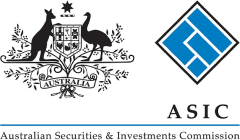When sunlight hits the Earth’s atmosphere, it scatters into all the colours of the rainbow. Bam! Blue scatters the most because it has the smallest* electromagnetic waves, giving the atmosphere a blue glow. And so, there it is: blue is the colour of our bare sky. The colour you hope to see every morning when you wake up.
But all blues are not made equal.
Every city has its own range of hues. The level of ‘blueness’ depends on factors, including the angle of the sun, cloud cover, and air pollution – perhaps that’s why many of us head for holiday destinations with famously blue skies. But which are the bluest on Earth?
S Money worked with a data scientist to analyse images of the sky from every nation’s capital (as well as the 25 most populous US cities). Ranking them according to the CIELAB colour scale, we discovered which cities around the world have the bluest sky. And then we figured out the hex colour code for each sky so we could show you the results online.
Because the images were taken at different times, the result is not rigorously scientific. However, by using only images from sunny days, each city was granted a sporting chance at the top spot.
The Top 10 Global Cities with the Bluest Sky
The bluest skies in our study occurred across four continents. Our top ten includes nine capital cities from Asia, Europe, North America, and Oceania, plus San Francisco, the big city with the bluest sky in the US.
Seven of these cities are coastal, and four (Suva, Nassau, Helsinki, and Oslo) easily make the World Health Organization (WHO) target for low air pollution. Heavy air pollution can turn the sky white or grey. However, it is not a hard-and-fast rule.
WHO has produced a scale of Air Quality values (AQI) from 1 (low) to 500 (high), and three of our top ten cities have an AQI between 51-100 – rated just ‘moderate.’ The third-bluest-skied city, Phnom Penh in Cambodia, has an AQI of 133, making its air ‘Unhealthy for sensitive groups.’
Compare Your City’s Sky to the Bluest Around the World
Want to know which cities have the bluest skies? Use our comparison tool to select any two of the world’s capital cities, or the US’s 25 most populous cities, and see which has the ‘bluest sky’ according to the CIELAB colour scale. We have also included air pollution (µg/m³ of PM2.5) and air quality (AQI) scores so you can also see how pollution affects the skies above us.
Moscow looks pretty clear compared to Tunis. Sneak a gander at their respective air quality, and you will see why. Moscow’s AQI of 43 (Good) is competing against Tunis’s dismal rating of 207 (Very Unhealthy).
But air quality isn’t everything. Moscow and Jakarta share the same average air quality and pollution, but Jakarta’s sky isn’t nearly as impressive. This discrepancy might relate to the time of year/day the pictures were taken, or it might be due to higher humidity in Jakarta.
US Cities: San Francisco has Gentle People and Gentle Skies

San Francisco’s blue skies may be due to its low air pollution. With an average measure of only 7.1 micrograms of fine particulate matter per cubic meter (smashing WHO’s target), the San Francisco sky is both bluer and clearer than neighbouring American cities along the west coast. Unfortunately, the clean air is not evenly distributed, and poorer neighbourhoods suffer worse air.
Americas: Nassau Boasts Clean Air and Clear Skies

Want to enjoy the same Caribbean blue James Bond does on vacation? Nassau, the capital of the Bahamas, is the city with the second bluest sky in the world, making it a popular backdrop for exotic movies. Nassau's AQI of 2 also represents some of the healthiest air in the world. So, breathe deep and drink a Bahama Mama while you wait for your next secret mission.
Europe: Paris Outshines Scandinavian Capitals

With an AQI of 97 (Moderate) - far lower than other western European capitals - the sky over Paris plays its role in the romantic aura of the city. And guess what: visitors like to use its revolutionary blue sky as a photographic backdrop to the Eiffel Tower. Paris has the fifth bluest sky in our study, and sixth and seventh place also go to European capitals: Helsinki and Oslo. The low angle of the northern sun reduces the reds and intensifies the blues that reach Scandinavian eyes.
Oceania: Suva is Suave in Cyan

When you picture a tropical paradise in your head, you are probably picturing the beaches of Fiji. Although it rains in the capital of Suva nearly half the year, the dry season is quite popular with tourists. In fact, our research suggests Suva is the bluest-skied city in the world! On the right day, Suva treats honeymooners to an azure horizon laid across the endless expanse of aquamarine.
Asia: Phnom Penh is the Blue Pearl of Asia

Head over to the Pearl of Asia (when travel is advisable again) to enjoy silhouettes of the gorgeous Buddhist temples and French colonial architecture against a sapphire sky. Phnom Penh has very polluted air but maintains very blue skies due to its latitude. The city’s lateral position also means lots of invisible ultraviolet radiation from the sun – so it is safest to cover bare skin even on cloudy days.
Africa: Enjoy Cape Town Clean from a Table Mountain Cableway

Cape Town’s AQI of 11 (Good) gives it the healthiest air of any African capital, and the dividend is a beautiful coastal sky. Residents can take an aerial cableway to Table Mountain and enjoy a view from 3,500 feet above the city. (By now it will be no surprise to learn that Africa’s second- and third-place skies are also along the coast.) Although Cape Town is technically only a third of a capital (each branch of the South African government resides in a different city), it gets more than its share of blueberry-pie-coloured views.
Many factors affect sky ‘blueness’, including location, climate, time of day, and geography. However, in general, cities with lower air pollution and cities closer to the coast enjoy better blues. Try the tool yourself to see how your own nation’s capital compares.
*(Note: violet waves are smaller than blue ones, but human eyes are more sensitive to blue).
METHODOLOGY & SOURCES
We gathered a list of every capital city in the world as well as the 25 most populous cities in the USA. We then used Google Street View to find photos of a blue sky in each of these cities before using ColorPick Eyedropper to rank the shades of blue by their hex code. Some capitals were omitted due to the absence of any Street View photo without cloud cover.
In order to rank the colours by blueness, we converted RGB codes to CIELAB, the color space designed by the International Commission on Illustration to approximate human vision, which allowed us to isolate the amount of blue in each image.
Average pollution and air quality data come from iqair.com. WHO calculates a city’s AQI (air pollution) score by measuring the density of fine particles and other chemicals in the air.
StarTalk. (2020). Neil deGrasse Tyson Explains Why The Sky Is Blue. youtube.com
Corfidi, S. (2014). The Colors of Sunset and Twilight. spc.noaa.gov
City and County of San Francisco. (2021). Days with an EPA Air Quality Index Rating of "Good." sfgov.org
Bourzac, K. (2021). Hyperlocal air pollution analysis shows health inequities. cen.acs.org
Lonely Planet Editors. (2021). The best time to go to Fiji. lonleyplanet.com
Climate Data. (2021). Suva Climate. climate-data.org
Wikipedia Editors (2021). Phnom Penh. wikipedia.org
Trip Advisor. (2016). Phnom Penh Weather and When to Go. tripadvisor.org
Wikipedia Editors (2021). List of films shot in the Bahamas. wikipedia.org
Capetown Travel. (2021). Table Mountain Aerial Cableway. capetown.travel

